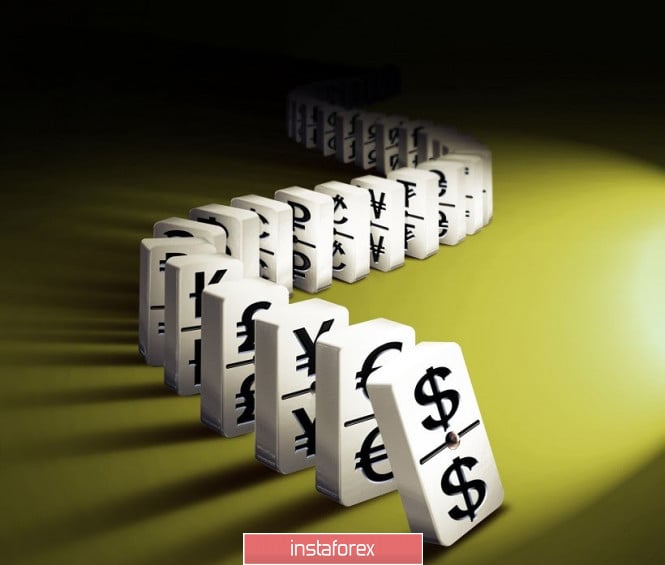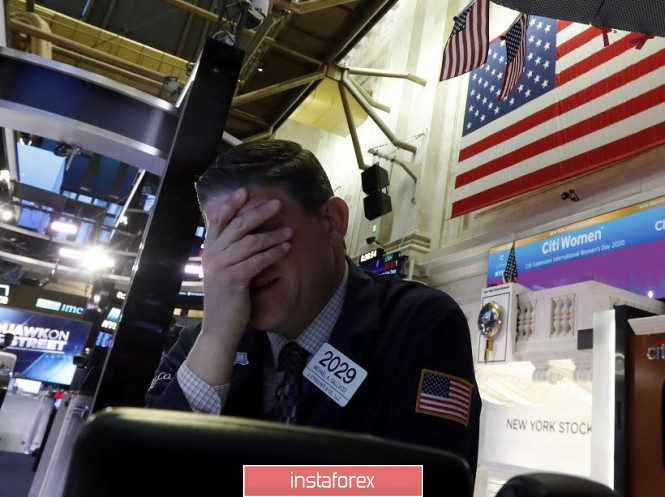"The dollar is back": a similar thesis can often be found in the analytical reports of many currency strategists today. The US currency is behaving quite abnormally today – amid all disadvantageous and extremely negative factors, the greenback is rapidly regaining lost positions. In just a few hours, it strengthened against the pound by 300 points, against the Australian dollar – by almost 200 points, and against the euro – by 200 points.
Moreover, this rise in the US currency occurred amid falling stock markets and a decrease in the yield of 10-year treasuries. Moreover, the dollar rose in price without any clear information reasons – on the contrary, the news flow continues to abound with pessimism, instilling fear in investors about the prospects of the world economy. Trading on Wall Street was suspended again today for the second time in a week, after the S&P 500 plunged seven percent almost immediately after opening. Therefore, this unusual behavior of the dollar discouraged many traders. The market continues to debate - according to some experts, we are dealing with a powerful, but still corrective pullback, according to others – the dollar is again trying on the image of a defensive tool.

As some analysts believe, the greenback has strengthened amid increasing rumors about the adoption of extraordinary measures of a stimulating nature by the US authorities. But today, on the contrary, the situation in this regard is in limbo. The day before yesterday, Trump promised to stimulate the US economy , which, according to him, "began to feel the negative consequences of the coronavirus epidemic." He assured Americans that the White House is preparing a package of stimulus measures that will affect, in particular, income taxes and loans for small businesses.
But later it turned out that the Congress was skeptical of this idea, at least in the interpretation of the Trump administration. Trump's advisers insist on the abolition of the payroll tax (if not by the end of the year, then at least for the next three months), as well as on providing state assistance to companies in the tourism industry, as well as oil and gas companies. Congressmen are opposed – according to their calculations, these steps will reduce the level of tax revenue by $400 billion. According to Trump's opponents, tax cuts will be covered by an increase in the budget deficit, which is unacceptable. The senators suggested alternative options – for example, paid sick leave for those Americans who are forced out of work due to quarantine or other circumstances related to the spread of COVID-19. But, apparently, the parties have not come to a compromise: first, Trump has not announced a program of financial stimulus for the economy (although he promised to do it yesterday), and secondly, he said today that he does not support the Democrats' program to combat coronavirus.
In other words, the dollar is clearly getting more expensive for other reasons – and the actions of the US authorities (or rather, inaction) have absolutely nothing to do with it. In my opinion, it is more plausible to assume that the greenback is again considered by the market as a safe-haven – against all odds. The single currency is under pressure from Lagarde's rhetoric, while black Monday was followed by black Thursday. A drop to 8-9% was recorded on the US stock exchanges, while the situation was more unfortunate in Europe. The STOXX Europe 600 composite index of the largest European enterprises slumped by ten percent (this has not happened since the global crisis 12 years ago), the British FTSE 100 index fell by 5.6%, the German DAX – by 6.1%, the French CAC 40 – by 6.1%, the Spanish IBEX 35 – by 6.07% and the Italian FTSE MIB – by 5.47%.

The oil market also added fuel to the fire: today it became known that the Saudis intend to send a stream of "black gold" to Europe (which is the main market for Russian oil) at a significant discount. There are also rumors that Saudi Arabia may significantly increase its oil supplies to the European Union as part of a "price war" with Russia. Against this background, a barrel of Brent oil has already returned to $32, and a barrel of WTI – to the borders of the 29-dollar mark.
So the European currency (temporarily? the market lost its appeal, and traders were forced to flee to the "American shores". It is difficult to say how long the greenback will hold the status of a defensive tool. The expensive dollar is the last thing the US economy needs right now. It is likely that the subsequent actions of the Fed (or verbal intervention by the representatives of the US central bank) will scare investors away from the greenback. But today, the US currency is clearly used by the market as a safe-haven amid growing panic in the financial world. Such impulsive price movements should be treated with caution, given the possible reaction from both the Fed and the White House. Therefore, at the moment, it is advisable to take a wait-and-see position on the EUR/USD pair.
The material has been provided by InstaForex Company - www.instaforex.com